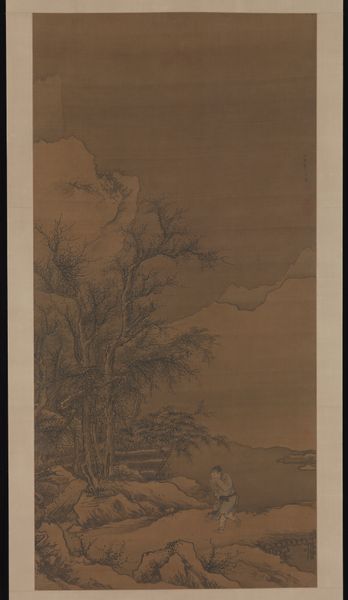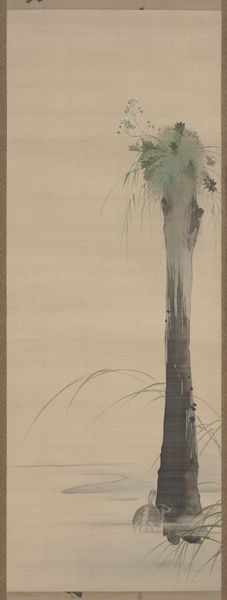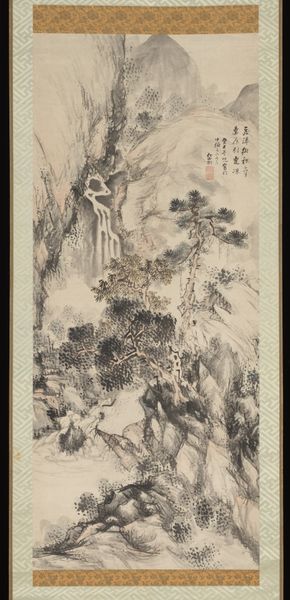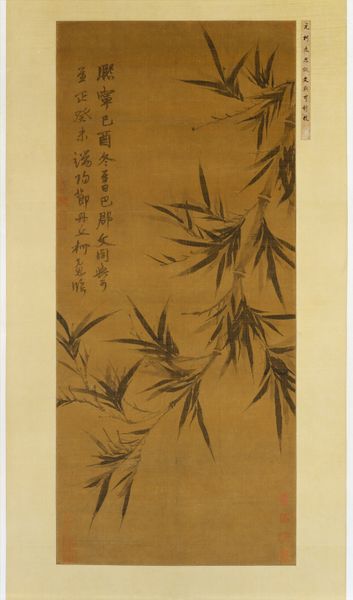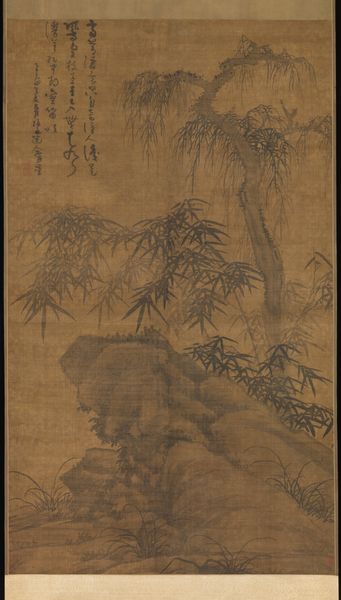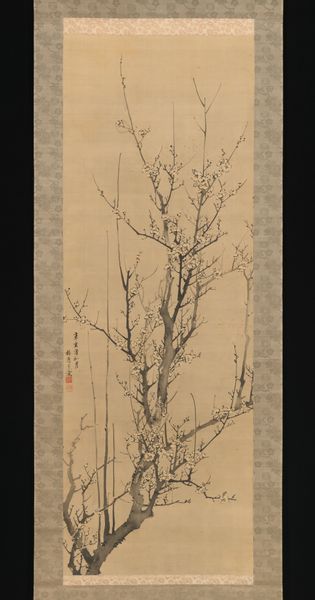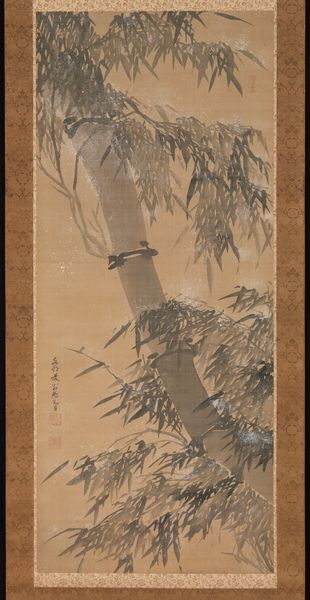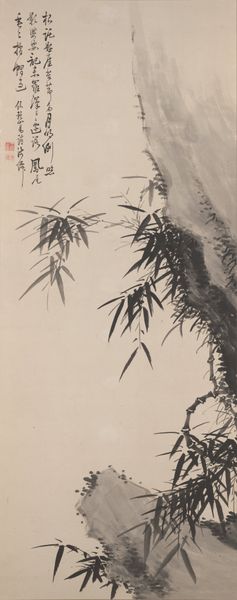
painting, hanging-scroll, ink
#
ink painting
#
painting
#
asian-art
#
landscape
#
hanging-scroll
#
ink
#
line
#
realism
Dimensions: 73 1/4 x 37 3/8 in. (186.06 x 94.93 cm)
Copyright: Public Domain
Editor: Standing before us is Zhu Sheng's "Bamboo and Rocks," a hanging scroll in ink from 1688. It’s a fascinating scene; the bamboo seems to almost disappear into the ochre background, leaving only a web of linear forms. What strikes you most about it? Curator: Immediately, I am drawn to the interplay between the solid and the void. Consider the placement of the bamboo stalks. They aren't simply presented as individual entities but are deliberately arranged to create a dynamic composition, activating the negative space. Editor: So the spaces between the bamboo are just as important as the bamboo itself? Curator: Precisely. And look at the ink washes. Zhu Sheng isn’t aiming for photorealistic representation. Rather, through varying the ink density and employing the brush with differing pressures, he is rendering the *idea* of bamboo and rocks. The eye isn’t just capturing visual information; it is decoding an intentional aesthetic experience. The formal properties—the composition, the brushwork, the use of empty space—these all coalesce. Observe how the texture and tone of the ‘rocks’ are only very slightly different than that of the paper that makes up the background. Editor: That makes sense. The focus seems to be the construction of an image, more than the subject depicted. Curator: Indeed. We see not a mimetic reflection of reality, but a distillation of its essence through formal artistic choices. A kind of philosophical inquiry presented through the art materials themselves. Editor: This was fascinating; it really helped me see the work through a different lens. Curator: The careful deployment of artistic elements helps in unlocking many ways of considering artwork.
Comments
minneapolisinstituteofart almost 2 years ago
⋮
Zhu Sheng was born in the modern city of Hangzhou in the Zhejiang province. He studied under Lu Dezhi (1585-1660), a specialist in bamboo and orchid paintings who in turn was inspired by the great Song dynasty masters of bamboo paintings, Su Shi (1036-1101) and Wen Dong (1019-1079). This background rooted Zhu Sheng in a rather pictorial approach to painting. The second edition of the famous "Mustard Seed Garden Painting Manual" featured Zhu Sheng's designs for bamboo and orchid painting and he enjoyed professional success while working in Nanjing during his later years. The inscription reads: During the late spring of the year 1688, done after the brush-mode of the plum-blossom Daoist Wu Chen (1280-1354) by the seventy-one year old Zhu Sheng.
Join the conversation
Join millions of artists and users on Artera today and experience the ultimate creative platform.


